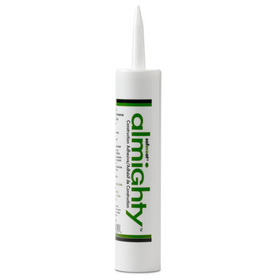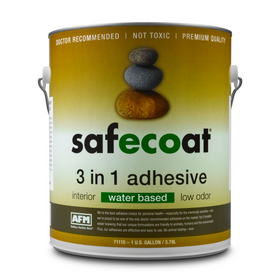
A Tennessee Family Building a Net Zero Ready Modern Farmhouse for the Generations
Last Updated: Feb 13, 2025When John Plunkett went back to school for an MA in Environmental Sustainability, little did he realize his education's profound impact on his family and his future. "The program exposed me to, among other things, the negative impact humans can have on the environment when they're building a home," he recalls. "As I went through the program, I talked with my family about what I was learning, and it was a real eye-opener for us."
Table of Contents
- What Technology and Materials Helped the House Attain Net-Zero Ready?
- Black Modern Farmhouse
- Solar Energy and Electrification at Home

John and his wife Angela, who have five children (one is an adult with their own family), also wanted to build a new house that would accommodate everyone. "We want them to come home and stay without putting any of our other children out of their rooms," Angela explains. "In the long term, when we're empty-nesters, we still wanted a home that could accommodate our large family, with everything we need on the main level so we can age-in-place."
The Plunketts read Rise Editor-at-Large, Melissa Rappaport Schifman's book, Building a Sustainable Home: Practical Green Design Choices for Your Health, Wealth, and Soul, and decided not to go the LEED route. "The book helped us a lot," Angela says. "From the book, we figured out we'd rather build a Passive House than a LEED home, and that led us to an architect who knew what we were talking about."
The Plunketts' 4,018-square-foot home, with a 700-square-foot bonus room above the garage (Angela's office for her sustainable and eco-friendly yarn business), is nearly complete. The home is net-zero ready and meets the requirements of a Passive House. "The house is ready for solar, and we have the solar panels, but we want to see the energy draw of the house before we spend the money on the installation," Angela says.
In Eagleville, Tennessee, the home was designed by architect Ryan Thewes of Nashville and constructed by Hedgewood Builders. "Our builder was on board with energy efficiency—that's why we hired him over the seven we interviewed," says Angela. The builder's subcontractors, however, "had to be educated to think outside the box." Nonetheless, adds John, "We feel like we've accomplished that."
What Technology and Materials Helped the House Attain Net-Zero Ready?
The team decided on a BIBS (blown-in-blanket insulation) system inside and the ZIP System outside to insulate the house. The Plunketts worked with E3 Construction Company in Nashville "to help meet our energy and insulation needs most efficiently," Angela says.

"Because the house we've built has thicker walls than in a traditional home—eight-inch and six-inch thick walls—traditional insulation doesn't fit that profile as well as BIBS," John explains. BIBS insulation is "blown into every cavity of the framing, and held into place with netting," he adds. "The insulation is densely packed in."

The double-layer roof uses the ZIP System, with a two-inch insulation layer, airspace, decking, and roofing. The team extended the ZIP beyond the walls to the roof for a continuous sheath. "As the sun hits the roof," John explains, "the two inches of insulation will deflect some of the heat, which will dissipate via the two-inch air gap."

ZIP and ZIP tape covers all sides of the framing. The house is clad in concrete fiberboard, which was painted black. The first blower-door test reached about 1.3. "We are working to lower it," Angela says. "We put dollars and effort into the build to, hopefully, not need the solar panels unless we want to go all the way to net-zero. With the solar, we will meet net-zero."

Using the BIBS and ZIP system "were a little more expensive than we initially expect," John adds, "but they provide an efficient way to get a tight envelope around the house. The home's Pella Impervia windows are made from durable, five-layer fiberglass material.

Black Modern Farmhouse
Angela describes the home as a "modern farmhouse," made striking by the family's decision to paint the exterior black. On the welcoming front porch, the exterior's vertical concrete board was painted "Iron Ore" and the horizontal boards "Auberge."
The inside, she says, "is rather minimalist, to not add a lot of wood or trim work. It's a simple, Scandinavian-style house." The home features a high loft living area with 36-foot ceilings.

While the house isn't in a flood plain, the team built up the foundation a few feet by putting a wall of concrete blocks on top of our poured concrete footers before adding the concrete foundation.
Building Materials
Shop high-performance building materials that are vetted for benefits to your health, your pocketbook, and the planet.

AFM Safecoat Almighty Adhesive Case of 12
AFM Safecoat
In Stock

AFM Safecoat 3 in 1 Adhesive
AFM Safecoat
In Stock

Quickscrews Cabinet Install Screws
Quickscrews
In Stock

AutoSlide Automatic Sliding Door System
Autoslide
Out of Stock
2 Colors

Autoslide Smart Tag Pet Door Kit
Autoslide
Out of Stock
2 Colors

AutoSlide Elite iLock Smart Tag Pet Door System
Autoslide
Out of Stock
2 Colors

Quickscrews Pan Head Pocket Hole Screws
Quickscrews
In Stock

Autoslide Elite Smart Tag Pet Door Kit
Autoslide
Out of Stock
2 Colors

Autoslide Motion Activated Pet Door System
Autoslide
Out of Stock
2 Colors

Quickscrews Square Flat Head Wood and Particle Board Screws
Quickscrews
In Stock

Thewes designed the structure for passive solar gain, adding window overhangs at specific angles to let the sun in during winter months and prevent overheating during the warm months. "During the summer, we don't get sun in the house," Angela says. Because of the passive solar gain, the polished concrete floor on the main level also heats up at the appropriate times and holds the heat into the evening.

The home will include an induction stovetop to minimize overheating in the kitchen. Custom cabinets in the kitchen and elsewhere in the home are free of formaldehyde and off-gassing toxins.

Solar Energy and Electrification at Home
Through a colleague, John had access to "a substantial allotment of solar panels," he says, "60 240kw solar panels at cost." With the house nearly complete, however, "we're waiting to see how the house performs in terms of electrical requirements before we install the solar.

The HVAC system includes a "massive filtration system with a dehumidifier and ERV (energy recovery ventilator), as well as an exposed air duct in the living space," Angela says. Areas of the home are also heated and cooled with mini-splits, some ducted and others ductless. The home also has a heat pump hot-water heater.
Throughout the building process, the Plunketts focused on using local contractors, tradespeople, and materials. They anticipate their home will be finished in March—and they can't wait to move in. They're eager to begin landscaping with local and native plant species, "which will provide a natural border between the neighbors and us," Angela says. "We had a hobby farm in the past, so we'll probably do a small orchard and may even have some sheep. Hopefully, wool from the sheep will bring in another yarn source for my business."
Our goal was to minimize our impact as much as possible while building a family home for the generations.
John added. "We feel like we've accomplished that with an electric home built to Passive House standards, and perhaps even eventually with solar power, so we can live lightly on the land."

Note from the Editor: Stay tuned...we are excited to share the finished product with you soon!
Camille LeFevre
Camille LeFevre is an architecture and design writer based in the Twin Cities.
